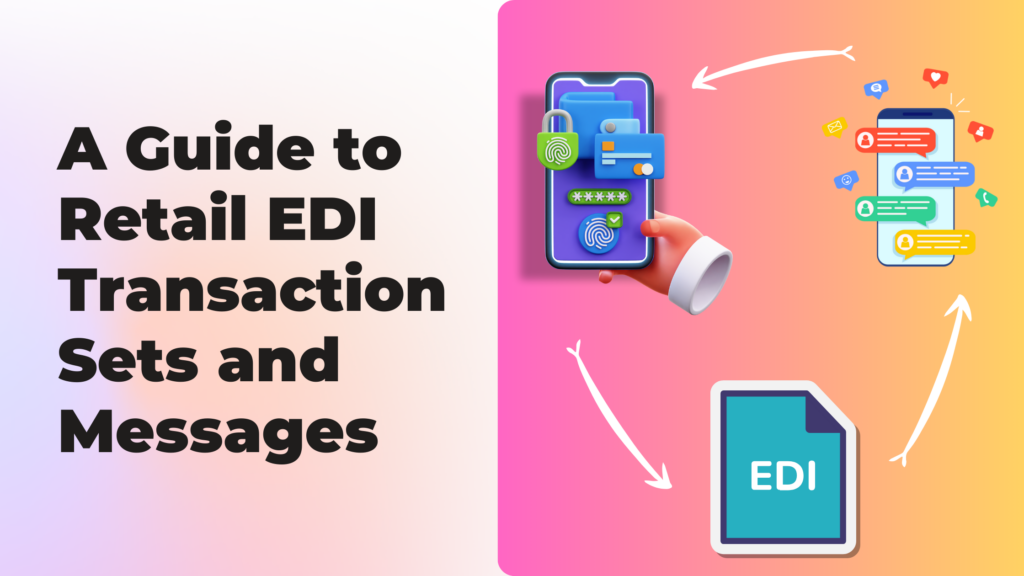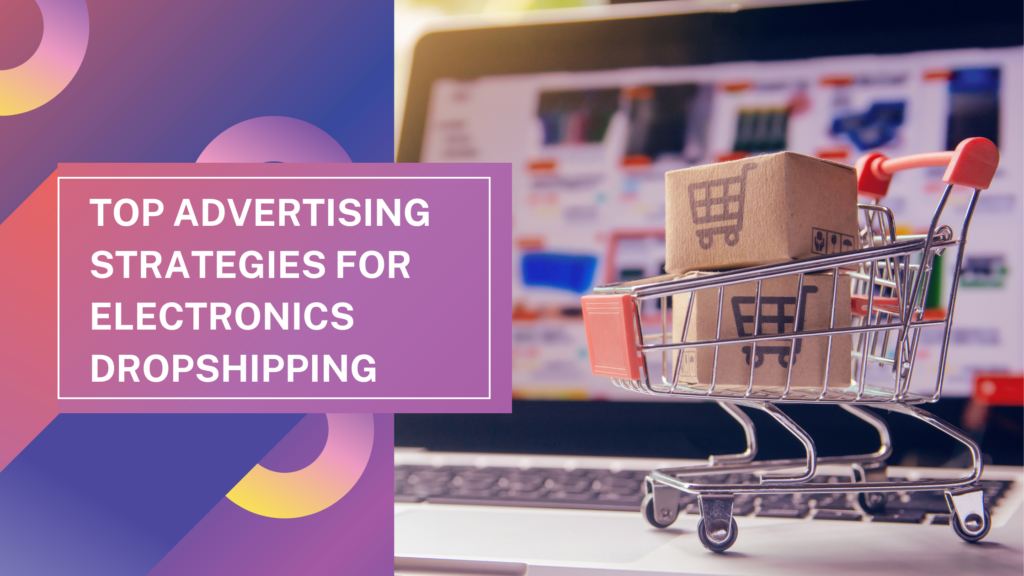A Guide to Retail EDI Transaction Sets and Messages
In the retail industry, efficient communication and seamless transactions are essential for success. Electronic Data Interchange (EDI) has revolutionized the way retailers and their trading partners exchange information, improving accuracy, speed, and efficiency. In this comprehensive guide, we will explore the most common retail EDI transactions and their significance in modern supply chain management.
EDI has become an indispensable tool for retailers, enabling automated and standardized electronic communication between trading partners. By utilizing a common language and format, retail EDI transactions eliminate manual data entry and reduce errors, ensuring seamless and efficient business operations.
EDI transactions are used to exchange a variety of documents such as purchase orders, invoices, advance ship notices, and more. These transactions follow specific standards and formats defined by organizations like ANSI X12 and EDIFACT.
EDI in Retail Order Processing and Inventory Management
Understanding Retail EDI Transaction Sets
EDI transactions in the retail industry are defined by specific transaction sets. Let’s explore some of the most common retail EDI transaction sets and their purposes:
Purchase Order (EDI 850)
The Purchase Order (EDI 850) is a transaction set used by retailers to communicate their intent to purchase goods or services from a supplier. It contains detailed information such as item descriptions, quantities, prices, and requested delivery dates. The EDI 850 streamlines the ordering process, enabling suppliers to process orders quickly and accurately.
Purchase Order Acknowledgement (EDI 855)
The Purchase Order Acknowledgement (EDI 855) is used by suppliers to confirm the receipt and acceptance of a purchase order. It provides information about any changes or discrepancies in the order, such as quantity adjustments or delivery date modifications. The EDI 855 helps retailers ensure that their orders are accurately processed and acknowledged by the supplier.
Advance Ship Notice (EDI 856)
The Advance Ship Notice (EDI 856), also known as the ASN or the EDI 856 transaction set, provides retailers with detailed information about the shipment of goods. It includes data such as the contents of the shipment, packaging details, carrier information, and tracking numbers. The EDI 856 enables retailers to anticipate the arrival of goods, update inventory systems, and improve receiving processes.
Invoice (EDI 810)
The Invoice (EDI 810) is used by suppliers to request payment for goods or services provided to a retailer. It contains detailed information such as item descriptions, quantities, prices, and payment terms. The EDI 810 automates the invoicing process, reducing paperwork and accelerating the payment cycle.
Functional Acknowledgment (EDI 997)
The Functional Acknowledgment (EDI 997) is a transaction set used to confirm the receipt and acceptance of an EDI transmission. It serves as a receipt notification, indicating that the EDI document was successfully received and processed. The EDI 997 ensures data integrity and validates the completeness of EDI transactions.
Payment Order/Remittance Advice (EDI 820)
The Payment Order/Remittance Advice (EDI 820) is used by retailers to provide detailed payment information to their suppliers. It includes data such as invoice numbers, payment amounts, and payment terms. The EDI 820 streamlines the payment process, reducing errors and providing suppliers with timely and accurate payment information.
Implementing Retail EDI Transactions
Implementing retail EDI transactions requires careful planning and collaboration with your trading partners. Here are some key steps to consider:
Choosing an EDI Solution Provider
Selecting the right EDI solution provider is crucial for successful implementation. Look for a provider with experience in the retail industry and a robust platform that can handle your transaction volumes. Consider factors such as reliability, scalability, customer support, and integration capabilities.
Mapping and Translation
Once you’ve chosen an EDI solution provider, you’ll need to map your internal data formats to the EDI standards. This involves defining the translation rules that convert your internal data into the EDI format and vice versa. Work closely with your EDI provider to ensure accurate mapping and translation.
Testing and Validation
Before going live with your EDI transactions, it’s essential to thoroughly test and validate your processes. Conduct end-to-end testing with your trading partners to ensure seamless communication and identify and resolve any issues. Validate your EDI transactions against the predefined standards to ensure compliance.
Integrating Retail EDI with ERP Systems
Integrating your retail EDI transactions with your ERP system can further streamline your operations. By automating the exchange of data between your EDI platform and ERP, you can eliminate manual data entry, reduce errors, and improve overall efficiency. Choose an EDI solution provider that offers seamless integration with your ERP system.
EDI Compliance and Industry Standards
EDI compliance is essential for successful retail transactions. Adhering to industry standards ensures compatibility and smooth communication with your trading partners. Common EDI standards in the retail industry include ANSI X12 and EDIFACT. Ensure that your EDI solution provider supports the required standards and stays up-to-date with industry changes.
Common Challenges in Retail EDI Transactions
While retail EDI transactions offer numerous benefits, they can also present challenges. Some common challenges include:
- Complexity: Implementing and managing EDI transactions can be complex, requiring technical expertise and ongoing maintenance.
- Trading Partner Variations: Different trading partners may have specific requirements or variations in their EDI implementation, requiring careful attention to detail.
- Data Synchronization: Ensuring accurate data synchronization between your internal systems and your trading partners’ systems can be challenging, especially with large volumes of data.
- EDI Standards Updates: EDI standards evolve over time, and staying up-to-date with the latest changes and updates can be a challenge.
By partnering with an experienced EDI solution provider and adopting best practices, you can overcome these challenges and maximize the benefits of retail EDI transactions.
Best Practices for Retail EDI Transactions
To optimize your retail EDI transactions, consider the following best practices:
- Choose a Reliable EDI Solution Provider: Select a reputable EDI solution provider with a track record of success in the retail industry.
- Maintain Clear Communication with Trading Partners: Establish open lines of communication with your trading partners to ensure smooth collaboration and address any issues promptly.
- Regularly Monitor and Review EDI Processes: Continuously monitor your EDI processes and performance to identify areas for improvement and optimize efficiency.
- Stay Up-to-Date with Industry Changes: Stay informed about changes in EDI standards, regulations, and trading partner requirements to remain compliant and avoid disruptions.
- Invest in Training and Education: Train your team on EDI processes, best practices, and industry standards to ensure smooth implementation and ongoing success.
By following these best practices, you can enhance the effectiveness and efficiency of your retail EDI transactions.
Future Trends in Retail EDI
The retail industry is continuously evolving, and so is retail EDI. Some future trends to watch out for include:
- Artificial Intelligence and Machine Learning: AI and ML technologies will play a significant role in automating and optimizing retail EDI transactions, enabling intelligent data analysis and decision-making.
- Blockchain Technology: Blockchain has the potential to enhance transparency, security, and traceability in retail EDI transactions, reducing fraud and improving trust among trading partners.
- Internet of Things (IoT): IoT devices and sensors can provide real-time visibility into inventory levels, enabling more accurate and timely EDI transactions such as purchase orders and advance ship notices.
- Cloud-Based EDI Solutions: Cloud-based EDI solutions will continue to gain popularity, offering scalability, flexibility, and cost-efficiency for retailers of all sizes.
By staying abreast of these trends and leveraging emerging technologies, retailers can stay ahead of the curve and further optimize their retail EDI transactions.
Conclusion
Retail EDI transactions have revolutionized the way retailers and their trading partners exchange information, improving efficiency, accuracy, and speed. By implementing the most common retail EDI transaction sets such as purchase orders, invoices, advance ship notices, and more, retailers can streamline their operations, reduce errors, and enhance customer satisfaction.
To successfully implement retail EDI transactions, it is crucial to choose a reliable EDI solution provider, map and translate data accurately, perform thorough testing and validation, and integrate EDI with ERP systems. By following best practices and staying up-to-date with industry changes, retailers can maximize the benefits of retail EDI transactions and stay ahead.





